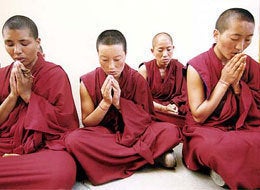
A few years back I discovered that meditation or contemplative practices done in a group setting are quite different than practices done alone. At the time, I was reading Steven Strogatz book 'Sync' about the science of synchronicity (the phenomenon of naturally arising sync in nature) and saw that the group experience was a syncing of individual transformative experiences.
The acronym SIT (Synchronized Individual Transformation) seemed perfect for describing this effect as it often arises when we sit together in meditation or contemplation.
Religious rituals likely arose because they provided a means to experience synchronized individual transformations. Rituals support individuals in their own inward investigations by providing a group experience that can strengthen it. Furthermore, they play a vital role in giving people an experience of being 'part' of something larger than themselves, particularly at times when this is needed most (times of great change - birth, marriage, death).
However, finding community rituals outside of religion is challenging because so many are circumscribed within belief systems.
Three years ago, my friend and I began a 'Friday morning SIT' at my house. A group of us meet each Friday to 'sit' together in meditation for 30 minutes. No one leads the group, no ones teaches. We merely come together, someone reads an inspirational quote from a glass jar full of quotes we each submitted, we sit together for 30 minutes (with a timer to keep track of time), then go our separate ways. In this weekly ritual, we experience synchronized individual transformations (and deepen our friendships as well).
In the convergence of science and spirituality (by that I mean the recognition of two viable ways of knowing, one objective and focused on the outer physical world, the other subjective and focused on the inward experience of mind), non-religious and fluid sorts of rituals are needed.
By fluidity, I mean that a ritual may be shaped by the members creating it; not by rigid doctrine of the past. Over the summer I performed a marriage ritual for two very close friends. Their marriage was secular (by that I mean without reference to God or any religion) but the content drew all participants together in a synchronized experience of love and connection.
Perhaps Synchronized Individual Tranformations (SITs) is a useful term for describing non-religious community rituals that enhance our individual growth by the group experience.